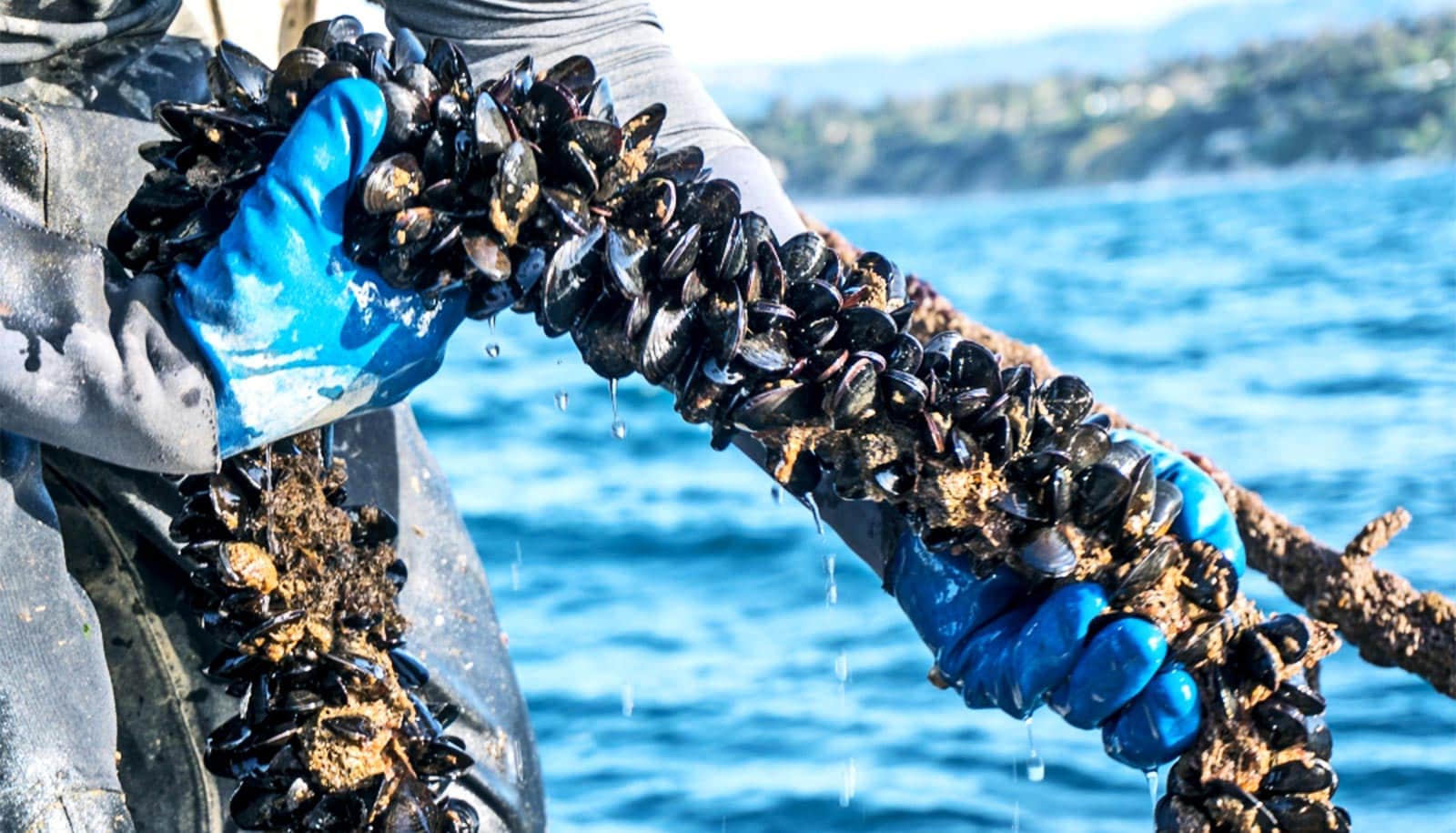Long-term ocean cycles have a strong influence on mussel farm productivity, according to new research.
As a growing population places pressure on the world’s fisheries, aquaculture has emerged as a potential solution to the rising demand for seafood. Offshore enterprises, often called mariculture, have gained popularity on this front. But selecting a site for a farm is a complex matter involving a variety of different factors.
The new research examines how long-term oceanographic cycles affect mariculture in Southern California.
“Fisheries have reached a production plateau, and now aquaculture is a promising solution for the future of seafood,” says lead author Jade Sainz, a doctoral student at the Bren School of Environmental Science & Management at the University of California, Santa Barbara. But, not all aquaculture ventures have the same impact on the environment, and she wants to ensure the practice becomes a solution to issues facing the ocean, rather than another problem.
“When you are going to do aquaculture in the ocean you’re looking for the best site,” she says. “And what’s the best site? Well it’s an interplay between many variables.” Local conditions—like temperature, topography, and currents—affect the animals, and the farmers have practical considerations as well, such as distance from shore and availability of space.
Sainz was curious how a location’s suitability might change after factoring in variability from long-term oceanographic cycles. She also wanted to find out which trends have the largest impact on productivity.
Major weather cycles and mussels
Of the major cycles that influence conditions in the Southern California Bight, many who live in the region are familiar with the El Niño Southern Oscillation, which brings warmer, wetter conditions to California every half decade or so. Water temperature also fluctuates in a cycle known as the Pacific Decadal Oscillation, which can last anywhere from a few years to multiple decades. By tracking sea surface height, scientists can detect yet another pattern, the North Pacific Gyre Oscillation, which has profound effects on the ocean’s biology, chemistry, and physics, particularly along the California coast.
Sainz decided to use mussels to investigate the effects these ocean cycles have on mariculture, following a previous study by former Sustainable Fisheries Group researcher Sarah Lester, now an assistant professor at Florida State University. Sainz simulated mussel production at 223 sites between Point Conception and the Mexican border from 1981 through 2008.
She used four variables to calculate mussel production. Water temperature and the velocity of the currents figured prominently in the team’s model. They also accounted for water salinity, which correlates with nutrient upwelling from deeper, saltier water. Lastly, Sainz incorporated data on the depth of the mixed layer—the upper portion of the surface where interactions between the ocean and atmosphere are most pronounced. This is important for understanding photosynthetic activity.
Sainz had access to 28 years’ worth of high-resolution data through an ocean model researchers at UC Santa Cruz run. By feeding the historical data into a model for mussel growth, she could create a hindcast of modeled mussel production for each of the 223 locations.
Planning for the future
Sainz found not only that these cycles influenced mussel production in her modeled farms, but also production across all the sites correlated strongly with the North Pacific Gyre Oscillation. This means that farmers need to consider these long-term oscillations when selecting a site alongside local conditions and practical concerns.
“We were very surprised by this result, especially because we knew how variable production seemed from year to year,” Sainz says.
The North Pacific Gyre Oscillation has a strong correlation with nutrient and chlorophyll levels in the region’s historic data, particularly toward the southern extent of the California Current. So it makes sense the pattern may have a large effect on mussels farmed in Southern California because they filter food from the environment, she adds.
Although other variables also affect mariculture—rain runoff, oil spills, harmful algae blooms, and predators, for example—this model can serve as a foundation for further investigations.
Additionally, not all farmed species show this strong correlation with the North Pacific Gyre Oscillation. Sainz’s preliminary findings suggest that farmed fish track other climactic cycles. Still, the study highlights the importance of accounting for regional cycles when considering mariculture ventures.
Sainz plans to repeat her analysis for striped bass and sugar kelp, two other species covered in Lester’s previous work. Ultimately, she will consider how global climate change might impact mariculture in the future.
“Originally my motivations were considering what is going to happen to marine aquaculture with climate change,” Sainz says, “but we took a step back and says, ‘OK, let’s first analyze the natural variability of the region.'”
Without a clear understanding of a region’s natural variability, scientists and farmers might not have a complete picture of how conditions will change as the climate shifts.
The research appears in the journal Frontiers in Marine Science.
Source: UC Santa Barbara

